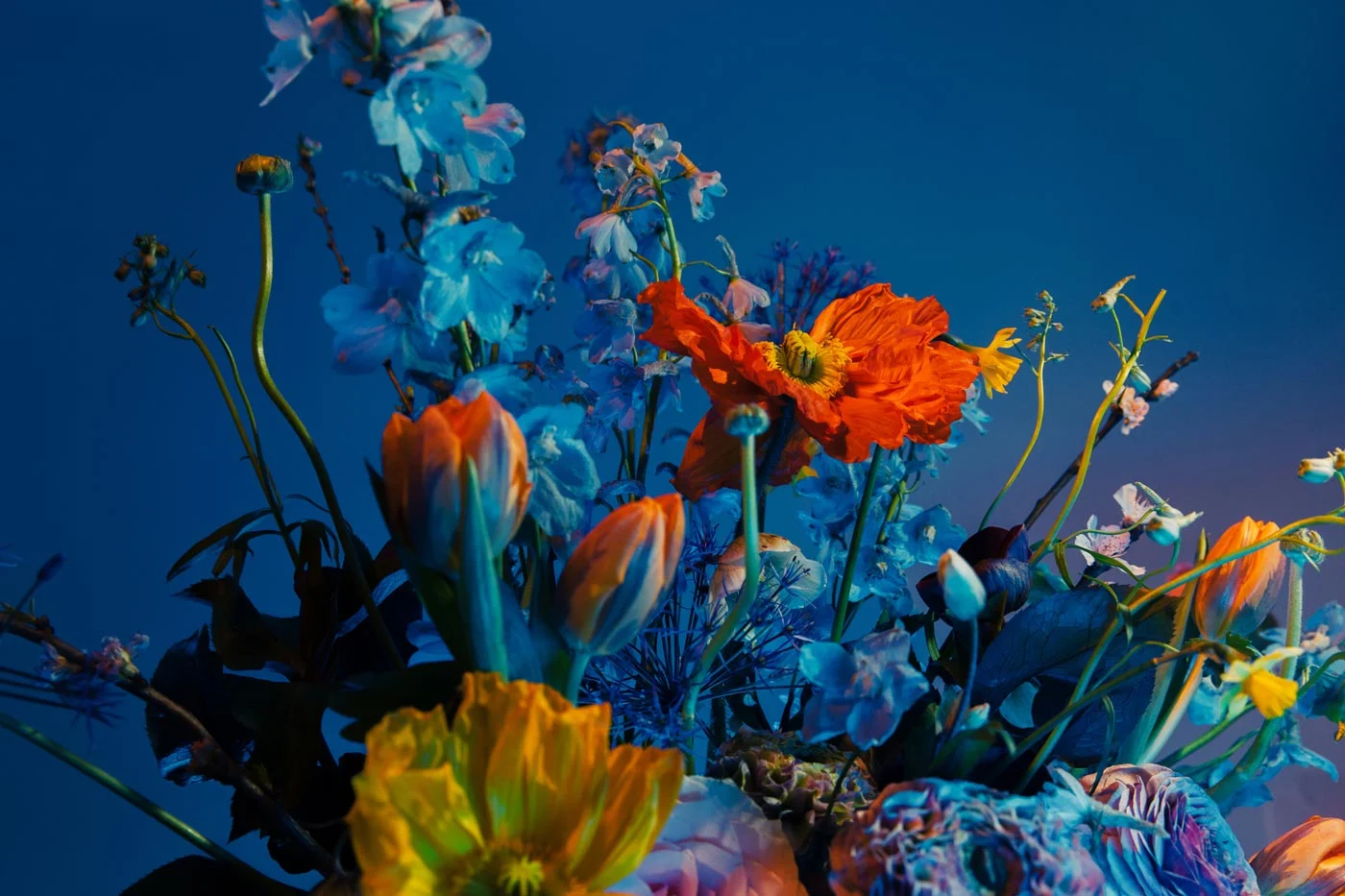The art of color correction and color grading: Professional techniques for breathtaking images
From WhiteWall expert Katharina Wergen
Color correction and color grading are crucial steps in the creative process of photography. These techniques allow you to optimize the color palette of an image and create a specific mood or aesthetic. Whether you are a professional photographer or simply want to enhance your vacation photos, the proper use of color correction and color grading can make the difference between an average image and an exceptional one. In this article, we explain the basics of color correction and color grading, provide practical examples, and show you how to use these techniques effectively to achieve impressive and, above all, print-ready results.
1.1 The basics of color correction

What is color correction?
Color correction refers to the process of adjusting the colors in an image to achieve a natural and realistic representation. The goal is to correct color shifts that can be caused by different light sources or camera settings. This includes adjusting the color temperature or white balance, adjusting brightness and contrast, and removing color casts.
Why do you perform color correction?
Inadequate color correction can make images appear unnatural or unattractive. Precise color correction, on the other hand, ensures that the colors in an image are as close to reality as possible.
This is particularly important for photographers who want to print, expose, sell, or exhibit their work. Color correction can significantly improve the visual impression of their photos.
What tools are available?
There is a wide range of image editing programs that allow color correction. Adobe Lightroom, Adobe Photoshop, and CaptureOne are just a few examples. These programs offer a variety of features that enable precise color matching—and we would like to give you an overview of the software's tool palette below. Adobe Lightroom
Adobe Lightroom is one of the most popular software programs for photographers when it comes to color correction. It offers a wide range of features for precisely adjusting the colors in your photos.
White balance: With the white balance tool, you can adjust the color temperature and hue of your photo to achieve realistic colors.
HSL/Color Panel: Here you can fine-tune the hue, saturation, and luminance of individual colors in your image.
Gradation curves: With gradation curves, you can adjust the brightness and contrast in different tonal ranges to achieve the perfect balance.
Spot Color: This lets you select and adjust a specific image color using tweezers.
Adobe Photoshop
Adobe Photoshop also offers extensive editing options and is often used for color gradation.
Color Balance: With the Color Balance tool, you can individually adjust the colors in the shadows, midtones, and highlights.
Selective Color: This tool allows you to change specific colors in the image without affecting the other colors.
Gradient Maps: Gradient Maps are a powerful way to apply creative color gradients to your image and create a specific mood.
CaptureOne
CaptureOne is an alternative to Lightroom that is also aimed at professionals and is valued by many photographers for its color correction features.
Color Editor: With the Color Editor, you can precisely select and adjust every color in your image.
Luminance masks: These masks allow you to apply adjustments only to specific brightness ranges.
Color correction presets: CaptureOne offers a variety of preset color corrections that you can use as a starting point for your own adjustments.
1.2 The art of color grading

What is color grading?
Color grading goes beyond simple correction and refers to the creative adjustment of colors to create a specific mood or visual aesthetic. It is an artistic process in which the colors of an image are deliberately altered to achieve an emotional effect.
What is color grading used for?
Color grading can dramatically change the mood of an image and make it more visually appealing. It can be used to tell a story, depict a specific time or place, or simply to make the image more stylistically interesting.
What tools are available?
Adobe Lightroom and Adobe Photoshop are popular software options here as well. There are also specialized programs such as DaVinci Resolve, which is known for its powerful color grading tools, especially in the film and video industry.
Color grading in Photoshop
How exactly you go about color grading can vary greatly from software to software. Let's take a look at how it can be done in Photoshop, for example:
Layers: Open the image in Photoshop and create a new "Gradation Curves" adjustment layer. This allows you to adjust the brightness and contrast of different color areas in detail.
Color balance: Use the "Color Balance" adjustment layer to change the color distribution between shadows, midtones, and highlights. Here you can add warmer or cooler tones as desired.
Color overlay: Create a new "Gradient Map" adjustment layer. Select a gradient that suits the desired mood (e.g., a blue-orange gradient for a warm sunset effect).
Selective color correction: With selective color correction, you can edit individual color areas and thus influence the overall impression of the image.
1.3 Practical examples of image editing
Example 1: Landscape photography

In landscape photography, color correction can be used to emphasize natural colors and contrasts. Here is an example of how this looks in practice:
White balance: Correct the white balance to achieve a natural color balance.
Exposure: Increase the exposure slightly to emphasize the details in the shadow areas.
Hue curves: Use hue curves to enhance the green tones of the trees and the blue of the sky.
For color grading, you could create a cool, blue-green look to emphasize the calm and coolness of a morning scene. Alternatively, you could add warm tones to enhance the image of a sunset.
Example 2: Portrait photography:

The most common application here is the correct representation of skin tones. If the background has bright colors, these can shine through onto the skin and look unflattering. With color correction and color grading, you can eliminate these false colors from the shot.
Color correction: Make sure the white balance is correct to achieve a natural skin tone. Use the color balance tool to remove unwanted color casts.
Color grading: For creative color grading, you can experiment with gradient maps to give the image a special atmosphere. For example, a slight sepia tone can create a feeling of warmth and nostalgia.
Example 3: Architecture and interior photography

When photographing architecture and interiors, color correction is crucial for authentically reproducing the colors of materials and the lighting mood. Since artificial lighting is often used in these settings, color correction is usually necessary if the white balance has not already been adjusted to the lighting situation on site.
Color correction: Use white balance to correct the color temperature of artificial lighting. Use the HSL tools to accurately represent the colors of wood, metal, and other materials.
Color grading: With selective color correction, you can specifically change the colors of walls and furniture to create a harmonious color palette. This can be particularly helpful if you want to create a consistent look for a series of photos.
2. Tips for perfect color correction and grading
Color correction is designed to give your images the perfect, harmonious, and true-to-life look or transform your creative image composition into a masterpiece. This requires technical knowledge and creative skill. However, a few helpful tips for your workflow can't hurt.
1. Use a calibrated screen. If your monitor is calibrated, it will display colors correctly and you can make precise adjustments.
2. Working with reference images helps you ensure consistent coloring. This is especially helpful when working with a series of images.
3. Try out different looks: Feel free to experiment with different color combinations. Color gradients offer endless possibilities for changing the mood and atmosphere of your photos.
4. Work non-destructively: Use tools and techniques that are non-destructive so that you can always return to the original colors. Layers and masks in Photoshop are particularly helpful here.
5. Get feedback: Show your edited photos to others and ask for feedback. Often, others will see things that you overlooked.
Conclusion

Color correction and grading are important tools in photography for improving the visual quality and emotional impact of photos. With the right tools and techniques, you can not only correct your photos, but also creatively design them to create a very special atmosphere. If you want to turn your pictures into true masterpieces that can be hung on your wall as high-quality prints or on canvas, or even displayed in your own exhibition, you need to get the most out of your shots. Because they deserve it. Try out the methods presented here and discover how you can take your photography to the next level.
Learn more about the author
As a trained portrait and wedding photographer, Katharina Wergen brings her extensive knowledge to photography. She has been working as a sales consultant at WhiteWall since 2018 and supports exhibition projects for museums and galleries. She is also increasingly focusing on reportage photography. Take a look behind the scenes of the photographer, here in the interview.

Also interesting:
Submitted by WhiteWall expert Katharina Wergen
HDR techniques and panoramic photography: Perfect photos with advanced shooting techniques
Discover how HDR and panorama techniques can take your photography to a whole new level. Whether you want to capture dramatic lighting effects, the finest details in bright and dark areas, or impressive landscapes in large format, the right shooting methods will enable you to create images that are perfect for impressive prints on acrylic glass or as master prints. Learn about these techniques now and be inspired!
Submitted by WhiteWall expert Katharina Wergen
The fine art of creative photo montage and compositing
Discover how to create fascinating visual worlds with composites and image montages—from surreal scenes and double exposures to text and lighting effects. With practical tips, software recommendations, and lots of examples for creative experimentation.
Submitted by WhiteWall expert Katharina Wergen
Advanced Retouching Techniques: A Guide to Final Perfection
Whether it's perfect skin, sparkling eyes, or distracting elements in the background, advanced retouching techniques take your portraits to a whole new level. Discover professional methods such as frequency separation, dodge and burn, and hair retouching, and learn how to turn good pictures into expressive masterpieces.




